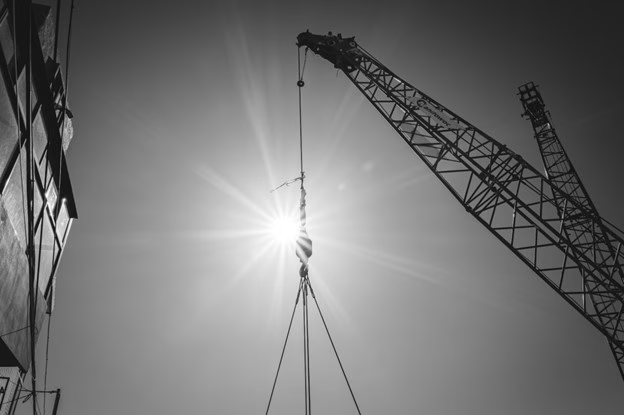Few tools match chain slings’ strength, versatility, and reliability for heavy-duty lifting and secure load handling. Whether operating in construction, manufacturing, warehousing, or offshore operations, ensuring your loads are safely secured during lifting is non-negotiable. But here’s the catch—businesses often overspend or underperform regarding load security. This article explores maximizing load security with chain slings while considering costs. With smart choices, proactive maintenance, and proper training, you can achieve high safety standards without draining your budget.
Understanding the Power of Chain Slings
Chain slings are made from high-grade alloy steel and are specifically engineered for lifting, rigging, and securing heavy loads. Unlike synthetic or wire rope slings, chain slings excel in harsh environments. They withstand high temperatures, resist abrasion, and endure repeated use in rugged conditions. Their durability alone makes them a cost-effective choice in the long run, especially when properly maintained and used.
Why Chain Slings Offer Superior Load Control
What sets chain slings apart is their flexibility and strength under tension. When you’re lifting irregular-shaped loads or materials with sharp edges, synthetic slings might fail or require extra protection. Chain slings conform to the shape of the load, making them easier to secure evenly and lift safely. This improved load control enhances safety and minimizes the risk of damage to the cargo.
Selecting the Right Chain Sling for the Job
Getting the most value from chain slings starts with selecting the right one. They are available in various configurations—single-leg, double-leg, triple-leg, and quad-leg assemblies. Each setup offers a different level of stability and weight distribution. For example, a quad-leg sling can stabilize an awkward load better than a single-leg sling. However, more legs don’t always mean better results if they aren’t properly loaded. Understanding load angle factors and working load limits is crucial to avoid overloading and ensure safe operations.
Proper Sizing and Load Limit Awareness
Mismatched sling sizes and poor understanding of working load limits are common—and costly—mistakes. Overloading a chain sling can result in failure and serious accidents, while underloading means you’re not optimizing the capacity you’ve paid for. Always consult the manufacturer’s load chart and factor in the lift angle, as it significantly affects the effective working load. Using the correct chain diameter and configuration means lifting more with fewer slings, streamlining operations, and lowering equipment costs.
Investing in Adjustable Chain Sling Components
One of the smartest ways to save money without compromising safety is using adjustable chain slings. These features include shortening or grabbing hooks, allowing you to fine-tune sling length on the fly. This means one sling assembly can handle a wider range of loads and applications, reducing the need for multiple fixed-length slings. The adaptability of these slings gives you better load alignment and stability, especially when working with variable cargo sizes.
Maintaining Your Chain Slings for Longevity
Chain slings have a major advantage in durability, but they still require regular inspection and maintenance. Rust, wear, stretch, or bent links can all compromise their integrity. A neglected sling is not just a safety hazard—it becomes a financial liability. Implementing a consistent inspection schedule—daily visual checks before use and formal periodic inspections—extends the life of your equipment and protects your workforce. Documenting these inspections is also key for regulatory compliance and insurance purposes.
Training Your Team for Safe and Smart Use
No matter how durable or expensive your chain slings are, improper use will shorten their lifespan and risk accidents. Investing in training pays off significantly. Workers should be well-versed in rigging best practices, understand load angle dynamics, and know how to identify sling wear or defects. Hands-on training and refresher courses empower your crew to use the equipment more efficiently, safely handle complex loads, and reduce costly errors or rework.
Maximizing ROI with Multi-Purpose Applications
Explore multi-purpose applications to get the most out of your chain sling investment. Many industries use them for more than lifting, such as securing loads during transport or tensioning applications. By integrating chain slings into different parts of your workflow, you reduce the need for specialized equipment, streamline your inventory, and cut back on redundant purchases. Their reusability and adjustability make them ideal for planned operations and last-minute needs.
Avoiding Common Costly Mistakes
Overordering, undertraining, and skipping inspections are the top three reasons companies overspend or face downtime due to lifting failures. Another mistake is using chain slings in corrosive environments without proper treatment or protection. Stainless or galvanized chain slings might come at a higher upfront cost, but they prevent premature degradation in these scenarios. Making data-informed decisions rather than impulse buys will ensure every dollar spent on your rigging gear pays off in performance.
Where to Source Affordable, High-Quality Chain Slings
The market is flooded with rigging products, but not all slings are equal. Work with reputable manufacturers or suppliers that comply with OSHA and ASME standards to avoid overpaying for underperforming products. Look for vendors that offer customization, provide usage training, and support with inspection services. While upfront savings might be tempting from lower-tier providers, the long-term risk of subpar equipment can lead to expensive failures or lawsuits.
Maximizing load security with Chain slings doesn’t have to come at a premium. By making informed decisions—from selecting the right sling type and configuration to training your team and maintaining your gear—you can enhance safety and efficiency without overspending. The durability, adjustability, and versatility of chain slings make them a valuable tool in any lifting operation, especially when every dollar counts. Focus on long-term value, not just short-term savings, and you’ll find that chain slings are the safest and most cost-effective choice for load handling with the right approach.

